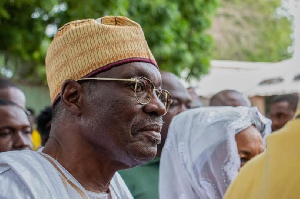The Director General of the UN Food and Agriculture Organization (FAO), José Graziano da Silva, came, saw and went back with very positive impression about the progress Cameroon is making in the implementation of its programmes and projects in the agricultural sector.
According to the FAO boss, Cameroon occupies a prominent place among countries in Africa that have put in extra effort in the fight to step down poverty. Cameroon, to go by the FAO official has succeeded in reducing by half between 1990-1992 and 2014-2016, the proportion of the population suffering from hunger.
This incidentally fulfils the number one objective of the UN Millennium Development Goals (MDG). Perhaps to express his satisfaction, the FAO boss on behalf of his organisation accepted to sign two agreements, one of them, partnership, with the aim of boosting agricultural production in the country.
The first agreement enables the UN agency to revise its headquarters and expand its liaison office for the Central African sub region in Yaounde and the second creates a 20-million dollar five-year partnership programme in order to promote agriculture in the country.
The second agreement comes just in time especially as Cameroon is harping on the implementation of its second generation agriculture programme. Announced at the Ebolowa Agric Show three years back, the concept, observers think ought to have been well advanced in its application phase.
Surprisingly, things seem to move rather disappointingly slowly. As the Minister of Agriculture himself stated in an interview with CT a year ago, more time is still needed as the presidential orientation is being applied progressively.
What is holding back the process from moving faster for a sector in dire need of innovation is the question on many lips. According to the Minister, the new concept needs trained men and women. The schools are there, but they need to be upgraded to suit the new dispensation. Second Generation Agriculture as underscored by the Head of State in Ebolowa is the translation of a real agrarian revolution.
Cameroon, it is often said, is a country of agriculture and its economy cannot be completely transformed if this sector remains at bay. In the words of the President, agriculture remains the country's development trump card.
"That is why we must successfully implement our agrarian revolution at all costs", he stated in one of his addresses to the nation. Everyone seems to be aware of the need to develop the sector; unfortunately, no one seems to say with exactitude what is holding the same sector back.
Second Generation Agriculture in the real sense implies modernised methods of farming, provision of better training to farmers, taking advantage of scientific innovations, and securing innovative financing among others. The concept equally entails local processing of raw materials, increase in crop exports, reduction in the importation of some food crops and creation of jobs.
From every indication, for all these to be achieved, there must be a certain degree of commitment on the part of stakeholders; the agric administration, farmer associations, financial institutions and researchers among others.
The creation of the Agriculture bank and the bank in charge of small and medium sized enterprises and the appointment of the officials of the former rekindle a lot of hope for many Cameroonian farmers. But the question remains as to how to access funds from the banks.
Cameroonian farmers, in effect, are in a serious dilemma. Whereas Commercial banks continue with their reluctance in giving out loans for agric development, the long awaited agriculture bank appears too opaque to penetrate.
And as this snail pace attitude continues, much time is rather spent on explaining the concept of second generation agriculture which farmers themselves continue to question the difference it makes with what has existed before.
That notwithstanding, the slow pace with which things are happening calls for very serious concern for a sector that contributes about 20 per cent to the GDP and on which 60 per cent of the population makes a living and one that continues to import even the most important major food items such as rice, corn and fish for its population.
Infos Business of Tuesday, 8 September 2015
Source: Cameroon Tribune













